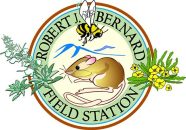Bird, Savanah Rose (2018)
Population structure of suburban coyotes (Canis latrans) across a fragmented landscape in Southern California.
Bachelor of Arts, Pomona College, Biology.
Advisors: Wallace Meyer & Jon Moore.
Habitat fragmentation poses a serious threat to wildlife, and carnivores with large home ranges are especially vulnerable to reproductive isolation from fragmentation. As coyotes (Canis latrans) are often associated with human development, it unclear how development might impact gene flow within their population in a fragmented suburban environment. In Southern California, reproduction isolation may lead to local extinction of coyotes from California sage scrub (CSS) fragments, which would threaten the fragments’ ecological integrity. This study aims to determine to what extent a major freeway and the suburban matrix function as a barrier to gene flow in coyotes that occupy CSS fragments of the San Gabriel basin in Southern California. I examined coyote population structure by examining DNA from scat samples collected from four study sites to compare genetic structure of sites separated by a major freeway, sites separated by only suburban development, and finally sites that are connected by continuous habitat. After assigning a 5-locus genotype to each sampled individual, I will be able to compare the structures of the sub-populations in each of my sites and assess their genetic similarity. A preliminary analysis shows high heterozygosity across all five loci in one of the CSS fragments which may be evidence against allele fixation. On the other hand, I found surprisingly low levels of heterozygosity in the two continuous habitat sights. Overall, a larger sample size and improved PCR of microsatellites success is needed to compare the population structures of these sites and to better understand the effects of different forms of fragmentation on coyote gene flow in a suburban setting.
